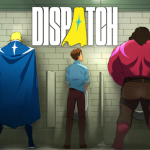Fortnite Mastery: A Friendly Guide to Win More in Every Mode

Want to turn panic landings into calm, clean wins? This friendly Fortnite guide shows you how to pick the right drop, build smarter (or skip builds), win more fights, and clutch the last circle. Short steps, clear tips, and simple routines — so you improve fast without feeling overwhelmed.
Whether you play on controller or mouse and keyboard, in Build or Zero Build, this guide gives you a practical plan. You will learn loadouts that work, settings that help aim, movement that keeps you safe, and tactics that carry you from early game to Victory Royale.
Main Guide
Build vs Zero Build: Pick your path
Fortnite has two main styles. In Build, you place walls, ramps, floors, and cones to defend, move, and take angles. In Zero Build, cover and movement items replace building. Choose the mode that fits your strengths today, and switch as you learn.
- Build mode: Best if you enjoy box fights, editing, and high ground plays. You must farm materials and manage pieces.
- Zero Build: Best if you prefer aim, positioning, and smart cover use. Movement items are key. You do not need to farm.
Tip: New players often improve faster in Zero Build, then add Build skills later. But if you love building, start in Build and practice simple structures first.
Settings that give you an edge
You do not need pro gear to play well. But a few settings increase control and awareness.
- Frame rate and graphics: Aim for stable FPS (60+ on console, 120+ if your screen allows). Lower heavy graphics on PC (shadows, effects) to boost FPS.
- Audio: Turn on “Visualize Sound Effects.” Use headphones to hear steps and shots clearly.
- Controller: Test lower look sensitivity for easier tracking. Try “Edit Hold” and “Edit on Release” if it helps you. Tune deadzones to remove stick drift.
- Mouse and keyboard: Use a medium-low sensitivity so your crosshair stays steady. Bind wall, floor, ramp, cone to easy keys. Consider mouse wheel reset for fast edits.
- Keybinds: Keep movement, building, and edit keys close so your fingers move less. It should feel natural within a week of practice.
Understand the map and the bus
Every match starts with a plan. Look at the bus path. Choose a landing spot that fits your skill and goals for that match.
- Hot POIs: Great for fast fights and practice, but risky. Good for aim and confidence building.
- Edge or split drops: Safer. Loot two or three small spots, then rotate. Good for learning rotations and late game.
Scan the sky as you drop. Count nearby players. If a spot looks too crowded, glide to a backup building or chest. Land on a gun first, then shields. Avoid landing on heals or mats without a weapon.
Early game plan: Land, loot, live
First minutes decide the rest of your match. Keep it simple and repeatable.
- Land on a chest or floor gun. Shotgun or SMG early is great for close fights.
- Pop shields fast. Carry at least one stack (minis are best early).
- Upgrade your loadout as you move — better shotgun, reliable mid-range weapon, mobility item.
- In Build: Farm materials as you rotate (wood first, then brick). Stay above 500 total mats before taking risky fights.
- In Zero Build: Move from cover to cover. Keep a movement item ready to escape third parties.
Weapons, rarities, and smart loadouts
Rarities matter: higher rarity means more damage, better stats, or stronger perks. But the best gun is the one you can aim with under pressure.
- Shotguns: Your burst damage up close. Learn to play around cover, then peek and shoot.
- SMGs: Great for follow-up damage and breaking builds at close range.
- ARs/DMRs: Reliable mid-range control. Use to tag rotating enemies and finish downs.
- Snipers: High risk/high reward. Best when you have time and a clear line of sight.
Suggested loadouts:
- Build: Shotgun + SMG or AR + long-range (optional) + mobility + heals.
- Zero Build: Shotgun or SMG + AR/DMR + long-range (optional) + mobility + two heals.
Heals: Hold minis plus one big heal. In squads, at least two players should carry team heals (splashes are great). Mobility examples include shockwaves, grapples, or other rotation items available this season.
Movement and positioning: Stay safe, get angles
Good movement turns a fair fight into your win. Use sprint, slide, and mantle to change levels and break aim assist or tracking. Avoid running in the open. Move from cover to cover.
- Right-hand peek: Fortnite favors the right side when peeking. Use it in doors, windows, and edits.
- High ground: Gives vision and safer angles. Climb to height when it is safe; do not waste mats too early in Build.
- Edge vs center: Early game, play edges to avoid third parties. Late game, take power positions near center or on high ground.
- Sound discipline: Crouch to move quietly when close to enemies. Doors, ziplines, and vehicles give away your location — plan around that.
Fight basics: A simple plan
Use this step-by-step approach in every fight:
- Spot: Hear or see the enemy. Mark their position for your team.
- Plan: Choose an angle and your approach (push, hold, or disengage).
- Damage first: Tag the enemy before you dive in. Even 40-60 damage gives you the advantage.
- Push smart: Close the gap with cover or builds. Do not run straight in the open.
- Trade safely: Peek, shoot, and reset. Avoid long, open peeks.
- Finish: After a crack or knock, push together and secure the fight fast to avoid third parties.
Aim tips: Keep your crosshair at head or chest level while moving. With shotguns, do small strafes and time your shot. With ARs, burst fire at long range to keep accuracy.
Build fundamentals: Simple structures that win
If you play Build, learn these first. They are enough for most fights.
- 1x1 box: Wall-wall-wall-wall + ramp or cone inside. Safe to heal or reload.
- Ramp + wall push: Place a wall as you ramp to block return shots.
- Box entry: Place a wall, edit a small window, shoot, then reset. You keep cover.
- Cones: Place a cone in the enemy box to stop their movement and edits.
- Reset edits: After every peek, reset to full wall. Do not leave open edits.
Practice “take and peek”: Claim a wall, edit a right-side peek, shoot once, reset. Repeat until you get a knock or they waste mats. Avoid over-building; smart, small builds beat random towers.
Zero Build fundamentals: Cover and timing
Without builds, you survive with cover, movement items, and smart angles.
- Play ridges, rocks, trees, and buildings. Peek only a small part of your body.
- Hold head glitches: Stand on slight slopes so only your head shows when you shoot.
- Third-party at the right time: When two teams fight, wait for shields to crack, then push from the side.
- Rotate early: Beat the crowd. Move on the safe side of zone with cover. Avoid crossing valleys late.
- Keep an escape: One movement item ready to leave a bad fight.
Mid game: Rotations and smart choices
After early fights, play to your strengths and resources.
- In Build: Keep farming. Aim for strong mats before mid circles. Choose fights you can finish fast.
- In Zero Build: Move along cover lines. Stop on high ground or solid buildings with good sight.
- Gatekeep: If you are in zone on a hill, watch edges and tag players rotating. Do not over-peek.
- Upgrade or swap weapons when safe. Manage ammo and heals for late game.
Late game: Close, calm, and clinical
The last circles punish mistakes. Stay calm and follow a simple plan.
- Position first: Pick high ground or a strong edge with cover. In Build, layer floors and cones for safety.
- Do not tunnel vision: Look left, right, behind. Check for flanks every few seconds.
- Use utility: Shockwaves, grapples, or other movement items to rotate safely.
- Damage before push: Always try to crack shields before you all-in.
- Play numbers: In squads, 4v3 or 3v2 fights are your moment to end it.
Awareness: Sound, vision, and info
Good awareness stops surprise deaths.
- Visualize Sound Effects shows footsteps, shots, and chests. Read the icons and directions.
- Use the compass to call directions (e.g., “Enemy 120, close roof”).
- Mark everything: Enemies, loot, and rotation paths for your team.
- Track storm timers and your path early to avoid panic rotations.
Team play: Roles and comms
In Duos, Trios, or Squads, clear roles and simple comms win games.
- IGL (shot-caller): Chooses drops, rotations, and when to fight or disengage.
- Entry: Takes first angle or pushes after a crack.
- Support: Holds utility, watches flanks, and finishes downs.
Keep comms short: “Cracked 1 HP behind rock,” “Rotate right ridge,” “Heals on me.” After a down, two players push, one watches third parties. Share mats and heals so no one is empty.
Practice plan that actually works
Make a short schedule so you improve each week without burnout.
- Warm-up (10–15 min): 5 min aim practice (tracking and flicks), 5 min shotgun duels or edit drills, 5 min movement/peeks.
- Focused games (3–5 matches): One goal per session (e.g., safe rotations, right-hand peeks, or late-game survival).
- Review (5 min): After matches, think about one death you could avoid. Write a small fix for next time.
Use Creative maps for edits and aim if you like. But do not stay there too long; real matches teach awareness and decisions.
Common mistakes to avoid
- Hot dropping every game without a plan. Mix safe drops to practice mid/late game.
- Over-looting. After you have a decent loadout and shields, move.
- Standing in the open. Always fight from cover or builds.
- Panic building. Place one or two smart pieces, then reset and peek.
- Over-peeking snipers. Change positions after you shoot.
- Chasing too far. Third parties will punish long chases.
- Ignoring the storm. Rotate early, not at the last second.
Adapting to the season
Fortnite changes. New weapons, items, and map updates can shift the meta. Keep a flexible mindset.
- Test new items in low-risk fights or Team Rumble/LTM if available.
- Update your loadout plan when a new, strong weapon arrives.
- Watch brief patch summaries from trusted creators to save time.
Simple routines for steady improvement
Small habits lead to big results.
- Set a one-minute plan in the battle bus: drop spot, path, exit route.
- Say your win condition: high ground, mobility, or storm tags.
- Use a two-peak rule: after two peeks, change angle or reset.
- Track mats, heals, and ammo after each fight.
- End every session with one note: what worked, what to fix.
Conclusion
Winning in Fortnite is not magic. It is a simple system: plan your drop, build or use cover smartly, take safe peeks, rotate early, and carry the right tools. Practice a little each day, keep your comms clean, and learn one small lesson each match. Your first crown — and many more — will follow.
- Pick a mode that fits you today (Build or Zero Build).
- Land on a gun, shield up, and fight from cover.
- Carry heals and at least one movement item.
- In Build: master the 1x1, right-hand peeks, and quick resets.
- In Zero Build: play ridges and high ground; rotate early.
- Take damage first, then push together.
- Review one mistake per session and keep improving.
















